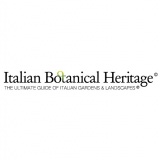
 Italian Botanical Heritage
Italian Botanical Heritage
Italian gardens: Upper Murgia National Park
- WTI Magazine #137 Mar 20, 2021
-

 Italian Botanical Heritage
Italian Botanical Heritage
The Upper Murgia (“Alta Murgia”) National Park was established in 1998 to protect the last example of the Mediterranean steppe in Italy.
The park stretches from the Adriatic coast to the Lucanian reliefs, reaching the maximum height of 2.227 ft on Mount Caccia; it is mainly made of limestone, tuffs, clay deposits, sands and alluvial deposits mixed with hummus and red earth and thus forming patches of ploughing land.
The pastures have a barren appearance but are home to several plant species of great importance: mosses and lichens, as well as several species of grass. The undergrowth is rich in wild orchids and dog rose bushes. The whole plateau is rich in mushrooms, tubers and bulbs, including edible ones, such as “lampascioni” (tassel hyacinth), wild asparagus, and “cardoncelli” (king trumpet mushroom).
The scarcity of human settlements has favored many local animal species such as green toads, edible frogs, the kotschy’s geckos, green lizards, foxes, stone martens, hares, hedgehogs, calandra larks, common ravens, and lesser kestrels: the latter has become the symbol of the park.
The park is crossed by 6 sheep tracks: grassy, stony or beaten earth paths, originated from herd trampling.
The human presence is evidenced by dry stone buildings that were used in the winter months and during the transhumance to shelter the herds. There are also many farms dating back to the XV century and the very beating heart of the local agricultural economy of the past. Not to mention Impossible Castel del Monte, acknowledged by Unesco as a World Heritage Site and built by Frederick II as a hunting lodge.
Some excavations carried out in the park have recently brought to light several archaeological finds from different periods: dinosaur footprints in the Pontrelli quarry and the Lamalunga cave of the “man from Altamura” (the trace of the Homo arcaicus in Italy, dating back to 250.000 years ago).
Many local associations organize visits to the park, on foot or by bicycle, discovering old paths, local flavors, and wild animals.